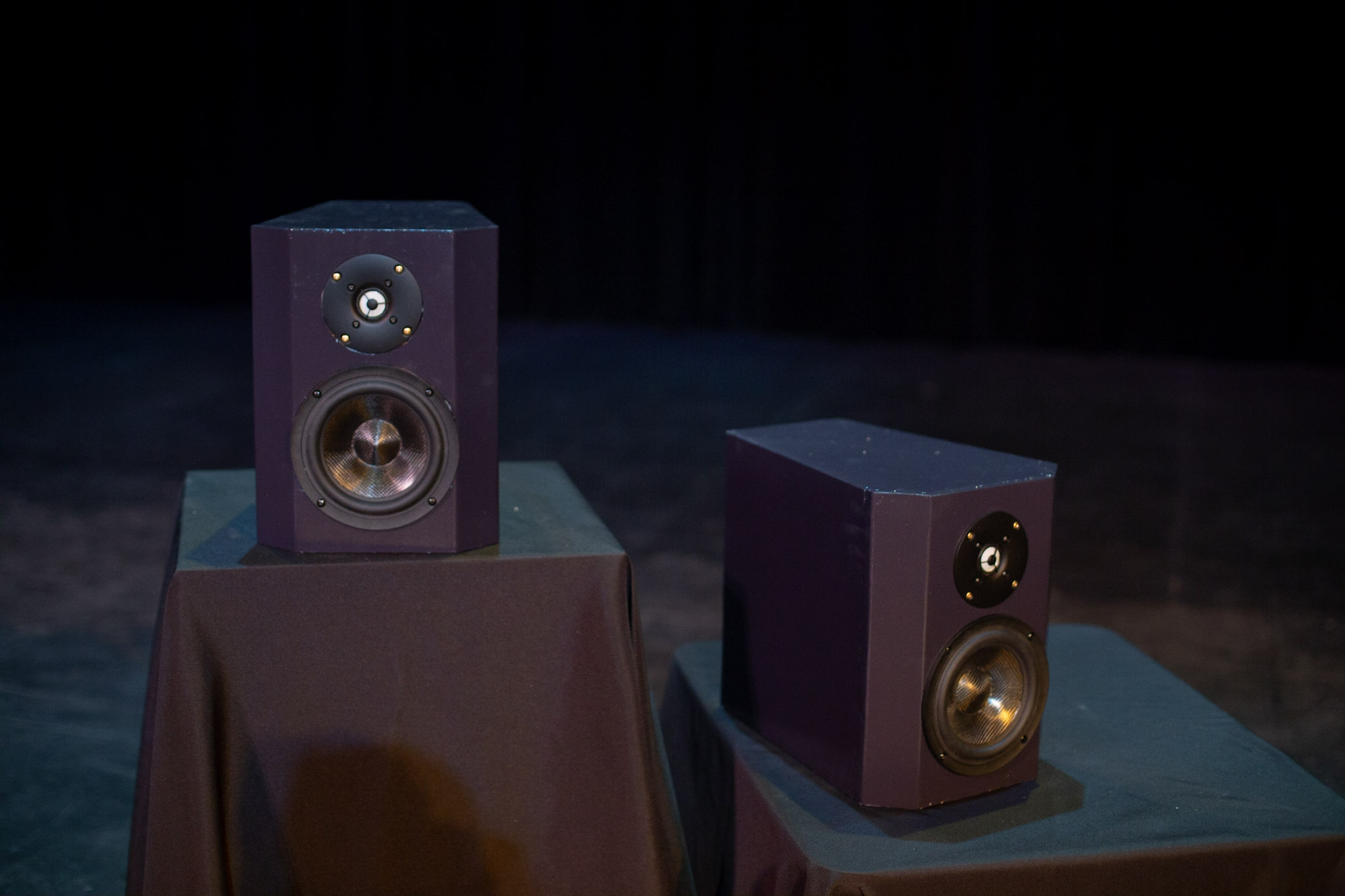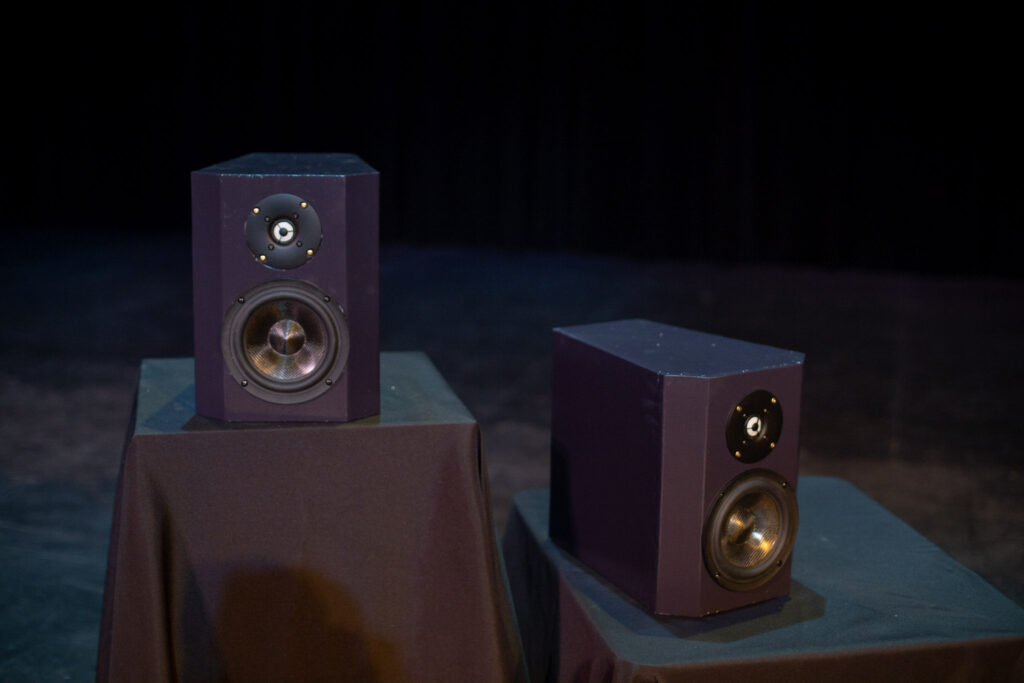A mix is only as good as the speakers that it is played on. That is a phrase that I have heard many times. The current global situation regarding COVID-19 has many individuals turning to crafts and DIY trends to keep from going insane. Depending upon what kind of tools and materials you have access to, this could be a helpful guide or just something enjoyable to read to pass the time.
When I built my speakers last year, I vastly underestimated the amount of woodworking experience I would need to construct the unique shape of my cabinets. It is incredibly important to be safe when working with power tools and to avoid working alone. Let someone know what you are doing and where you will be. Please, stay safe.
That being said, there are many things to know before construction. Designing speakers is a whole other beast. Before I started to design, I needed to answer questions like, what is their purpose, what kind of room they would be in, and what I would like them to look like. This allowed me to form a basis to work off of and led me to more technical specifications.
This is before I even decided between a sealed or ported/reflex enclosure. For those who may not know the difference, ported speakers have a port that provides a boost in the lower frequencies while sealed speakers do not have a port. Sealed enclosures have a better transient response and are preferred as reference speakers. You might prefer one over the other, depending upon what you plan to use your speakers for. It is also a good idea to do some testing and gathering of data about your own listening preferences to help infer your decision-making process. Good information to have maybe your preference on SPL range, a frequency response that you might need for the work you do, or even how much weight you can carry since you will be the one transporting them.
I performed simple SPL tests throughout my day while working. I noticed that I liked things quieter in the morning with a peak of around 90dB by late afternoon. As for size and weight, I lived on the top floor of an elevator-less building. I did not want to haul huge, floor-standing speakers up any steps. So I settled for some smaller desk monitors in the 25-45lb range. This brings us to my favorite part, frequency response.
This part of my technical preproduction did influence a large part of my design. I was firm about my goals regarding frequency and transient response. I designed these to be reference speakers. This means I wanted the sound that came out of the speakers to be as accurate as possible to the original source, without any coloration. I wanted a maximum frequency range for the size that they were with a tight transient response for detail work and mixing. What more could one ask for?
Well, bass. I would later come to realize you will always want more low frequency.
There was another goal that I was set on and that was cabinet shape. I wasn’t satisfied with the conventional rectangular enclosure shape. While doing research, I came across a paper by H.F. Olson titled Direct Radiator Loudspeaker Enclosures. This was what cemented my decision to construct a unique cabinet shape.
Olson called it a rectangular truncated pyramid or parallelepiped combination. My professor at the time called them the Superman badge shape. They looked a little bit like coffins to me. All of this being said, this is where I made things extremely difficult for myself.
I am proud to say that I may be an intermediate woodworker now, but before I built these cabinets I was absolutely a beginner. Special tools were needed to create the shape of these speakers and I was constantly working with small angles and precision. The somewhat curved or angled front of the enclosure is what gives the speaker a wide stereo image and smooth off-axis response. Having a smooth off-axis response allows for easy listening in many different positions in front of the speaker, not just center. I do a lot of work with spatial and immersive audio and it was crucial that I had a wide stereo image. It also minimized beaming effects that many typical rectangular cabinets have.
I am not going to forget to mention how I chose what drivers to use. I looked over many frequency response charts, paired woofers and tweeters to see which would be the best potential matches, modeled woofers, all in preparation for the final decision. This part of the design process is difficult because you can’t get a clear understanding of what the driver is going to sound like until it is in the enclosure. It was also tough, because of the cost. Drivers can be really expensive and for the average undergrad, this was not a fun decision.
The name of my speakers are the Kitten Koffins. For anyone who doesn’t know me, I am a proud, crazy cat lady. Their coffin-like shape combined with my personal touch suited them well. They are sealed reference speakers with an F3 of about 70 Hz. This refers to the point at which the signal from the loudspeaker drops 3 dB its normal SPL output. The speakers have a flat frequency response with a few places being +2/-2 dB. There is a slight 2 dB bump from 80 to 200 Hz which I am keeping until I can build a sub for the system. The low end was something I had to compromise on, but I had a plan to later add on to my set up so that it wouldn’t be such a big issue.
There is a two-inch-thick binder full of research, papers, and notes on the Kitten Koffins. I am attempting to put several month’s worth of work and information into a short article in hopes that it sheds some light on the subject for amateur speaker designers. It is a fascinating subject that can feel daunting. I promise you though, if done right the outcome is a sweet one.
If you would like to know more about Kitten Koffins, please feel free to email me at sjcalver@mtu.edu. I would be more than happy to share juicier details. Some of the reference materials I used when designing were books such as Loudspeakers for Music Recording and Reproduction by Philip Newell and Keith Holland, Introduction to Loudspeaker Design by John L. Murphy, and Sound Reproduction Loudspeakers and Rooms by Floyd E. Toole. The H.F. Olson article is titled Direct Radiator Loudspeaker Enclosures and is also referenced in the Philip Newell book. And lastly, special thanks to my professor and advisor Christopher Plummer for all the help during the design and tuning of these speakers. He is a wealth of information.

